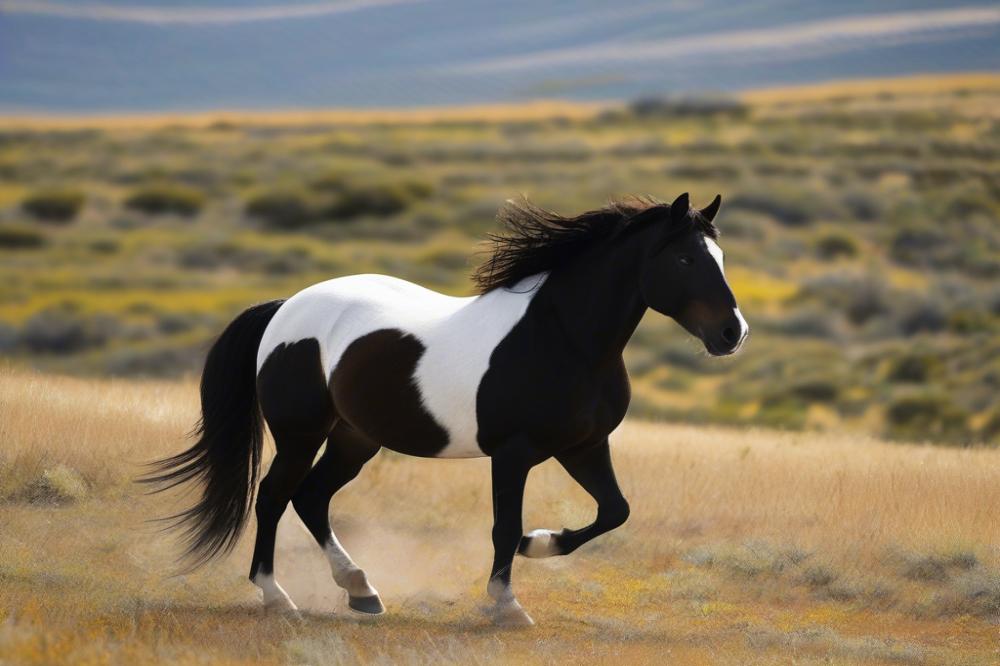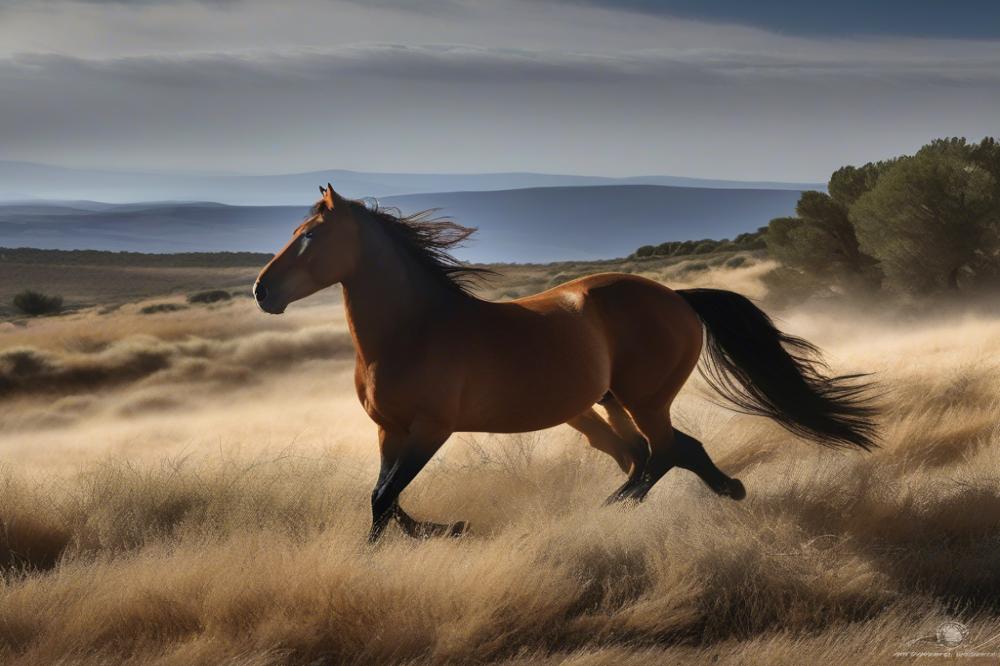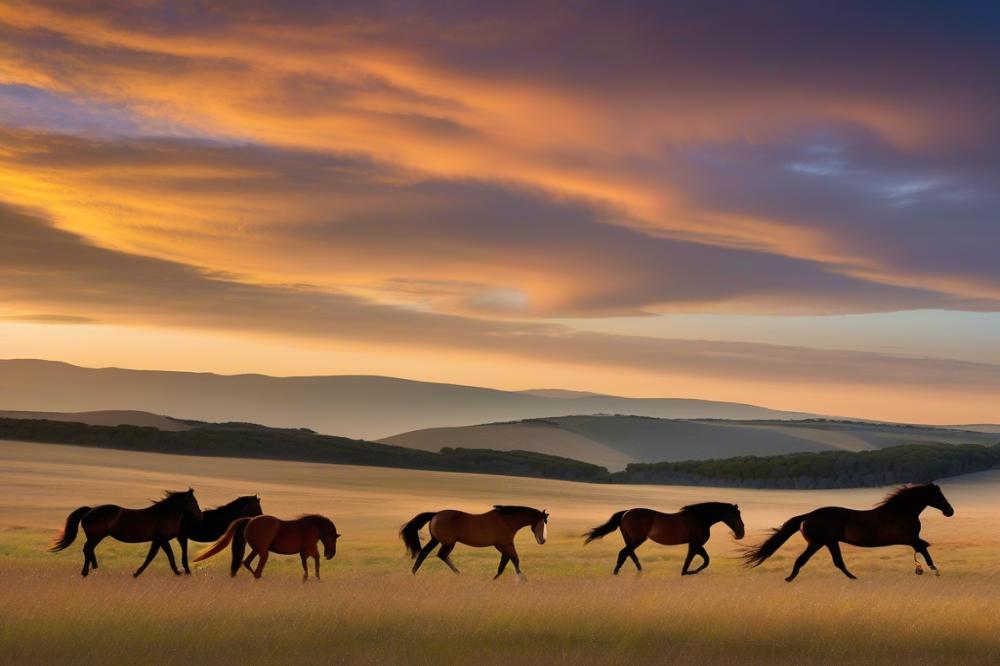Wild Horses of Spain: Ancient Breeds Roaming the Iberian Countryside
The wild horses of Spain hold a special place in the Iberian countryside. These animals represent a link to the past, echoing stories of ancient civilizations. Their presence enriches the landscape and highlights the cultural heritage of Spain. As these horses roam freely, they embody the spirit of the land. People often admire their beauty, grace, and resilience.
Preserving these ancient breeds is crucial for several reasons. With the rapid changes to their habitats, the risk of extinction becomes more real. Protecting them not only helps maintain biodiversity but also supports local ecosystems. The Iberian breeds have adapted over centuries to the environment, making their survival vital. Ensuring their future means safeguarding the traditions and values tied to them.
Feral horse populations, like these in Spain, play an important role in global biodiversity. They influence the genetic pool of domesticated horses. This interaction can lead to improved traits in future generations. Moreover, their natural foraging behavior helps manage plant growth, benefiting entire ecosystems. As humanity grapples with environmental challenges, such unique creatures remind us of nature’s complexity and beauty.
In conclusion, recognizing the significance of wild horses in the Iberian countryside is essential. They are more than just animals; they are a part of a rich historical tapestry. Understanding their value can inspire efforts to protect them for future generations. A collective effort is necessary to ensure these magnificent animals continue to thrive.
The History of Spanish wild horses

The origins of wild horses in Spain trace back thousands of years. They share a connection with Equus ferus, the wild ancestor of modern domesticated horses. These animals have roamed the Iberian Peninsula for centuries, adapting to the rugged landscape and diverse climates.
Historically, these horses played a significant role in the daily lives of Iberian peoples. They were not just animals; they were partners in labor and leisure. As Spain’s cultures evolved, these horses became symbols of strength and freedom.
Various civilizations influenced the development of local breeds. The Romans, for example, valued sturdiness and agility. They bred horses that could excel in both farm work and combat. The Moors brought their own techniques and ideals, shaping a breed recognized for resilience and endurance.
Each invading group added traits that enhanced these horses. This led to a rich tapestry of equine characteristics. Today, these influences remain evident in the features and temperaments of modern horses throughout Spain.
Pastoral communities also played a part in nurturing these animals. Generations of working alongside horses forged a deep bond between humans and equines. This relationship influenced both culture and tradition, intertwining their destinies over time.
As Spain’s history progressed, these wild horses stood witness to many changes. Challenges emerged, but so did a celebration of equestrian skills. Today, there is renewed interest in preserving their legacy, ensuring their place in the future.
Ancient Breeds and Their Characteristics

The Iberian Peninsula is home to several ancient horse breeds, each with its characteristics. One of the most renowned is the Andalusian horse. This breed is known for its striking appearance, often featuring a strong, compact body and a silky mane. They usually stand between 15 and 16.2 hands high. Their colors range from gray to bay, often showcasing vivid shades. Many admire their graceful movements and high-energy performance.
Another ancient breed is the Sorraia horse. It has a more primitive look with a lighter build, typically exhibiting a dun color. Sorraias have distinct dorsal stripes and vertical stripes on their legs. This breed represents a unique part of Portugal’s equestrian heritage. Their adaptability to the semi-wild lifestyle makes them fascinating to observe. They can thrive in rugged terrain and harsh climates.
The characteristics of these horses go beyond physical features. Andalusians show a calm and willing temperament, making them gentle companions. Riders often appreciate their intelligence and sensitivity. In contrast, the Sorraia tends to exhibit a more spirited personality, which requires a skilled handler. This difference in temperament reflects how horses have adapted to their environments over generations.
The Iberian landscape has shaped these breeds significantly. Mountainous regions and open plains challenge the horses, yet they adapt remarkably well. Strength and agility are essential traits, enabling them to navigate diverse terrains. These breeds’ history ties closely with Spanish culture and tradition, evident in art and literature throughout centuries.
Moreover, these horses are integral to traditional farming and ranching practices in Spain. Farmers rely on their stamina and strength for work in the fields. The connection between horse and handler remains a respected bond. This relationship illustrates the deep-rooted cultural significance of these breeds in Spanish life.
In essence, the wild horses of Spain carry the spirit of the land they roam. Their distinct traits and abilities reveal much about the rich history of the Iberian Peninsula. Through them, we see the interplay of nature and culture that has defined this unique region.
Natural Habitats and Ecosystems
In the rugged landscapes of Spain, wild horses thrive in diverse environments. From rolling hills to open plains, these animals inhabit a range of ecosystems. The terrain plays a critical role in shaping their lives and behaviors. Vast grasslands offer essential grazing, while wooded areas provide shade and shelter. Each habitat supports not just the horses but also numerous other species.
Healthy natural habitats are vital for the survival of these equines. They rely on abundant food sources such as grasses and shrubs found in their surroundings. Access to fresh water is also necessary for their well-being. Furthermore, these ecosystems help maintain the balance of flora and fauna. When habitats are intact, wildlife, including birds and insects, flourishes alongside the horses.
Environmental factors significantly impact the populations of these creatures. Changes in climate can alter food availability and water sources. Droughts, for example, can drastically reduce the grasses they depend on. On the other hand, heavy rainfall can lead to swampy conditions that are unsuitable for grazing. Both extremes challenge the horses’ ability to survive and reproduce. Human activities, like urban development, further threaten their natural habitats.
Preserving these delightful ecosystems is crucial for maintaining the delicate balance of life in Spain. Conservation efforts aim to protect land and resources, ensuring future generations can witness these majestic animals. By understanding their environment, we can better appreciate the connection between wildlife and their habitats. The wild horses of Spain not only charm those who see them but also highlight the importance of respecting nature’s intricate web.
Wild Horse Sanctuaries and preservation Efforts
Spain is home to several wild horse sanctuaries dedicated to the protection of these majestic animals. These sanctuaries vary in size and location but share a common goal: to preserve the heritage of their ancient breeds. Some of the most notable locations include the Coto de Doñana and the Sierra de Guadarrama. In these areas, horses roam freely, allowing them to live in a more natural environment.
Preservation initiatives are becoming increasingly important. Many organizations work tirelessly to create favorable habitats for the horses. They also focus on educating the public about the importance of these animals in Spain’s culture and history. Local communities play a crucial role in these efforts. Their knowledge of the land and its wildlife is invaluable.
There is also a growing awareness of the need for ethical tourism. Many sanctuaries offer guided tours that prioritize the welfare of the animals. Visitors can observe horses in a respectful manner while learning about their care and conservation. This approach helps to fund the sanctuaries and promotes a deeper understanding of the challenges wild horses face.
Collaboration among different groups enhances these efforts. Environmentalists, local farmers, and wild horse advocates often join forces. Together, they aim to create sustainable practices that benefit both the horses and their surroundings. This teamwork helps maintain the delicate balance of the ecosystem.
Additionally, research plays a key role in these preservation projects. Scientists study the behavior and health of these breeds to inform better management practices. Their findings contribute to the overall health of the herds and help protect them from diseases. Education is essential too, as it fosters a sense of responsibility among the younger generations.
Community involvement is evident in local festivals that celebrate these animals. Events featuring art, music, and local cuisine draw attention to the rich heritage associated with wild horses. These gatherings not only strengthen community ties but also raise awareness about conservation efforts.
In conclusion, the sanctuaries and their initiatives represent a harmonious blend of tradition and modern conservation. Through collaboration and education, Spain takes significant steps toward ensuring the future of its wild horses. Protecting these breeds is vital for maintaining the cultural identity of the Iberian Peninsula.
Cultural Significance and Equestrian Tourism
Exploration of the cultural heritage surrounding wild horses in Spain reveals deep roots in local traditions. Rural communities have long valued these majestic animals, often incorporating them into festivals and folklore. Legends and stories passed down through generations highlight their importance in Spanish identity.
Artistic expressions also showcase this connection. Painters, sculptors, and photographers have drawn inspiration from these creatures. Artistic depictions often capture their wild spirit and grace. Such works can be seen in galleries and public spaces throughout the country. Local artisans craft handmade goods featuring equine motifs, blending commerce and culture seamlessly.
Equestrian practices in Spain have evolved over centuries, influenced by the country’s unique relationship with horses. Traditional practices often emphasize respect and understanding of equine behavior. This deep bond between rider and horse fosters a connection that transcends mere transportation. Riders often learn techniques that highlight the animal’s agility and stamina. These methods are not just skills but also ways to honor the heritage of horsemanship.
Tourism centered on equestrian activities continues to grow in popularity. Riding schools and guided tours attract visitors seeking authentic experiences. Travelers ride alongside local guides who share stories about the land and its history. Such interactions create opportunities for visitors to engage with the culture on a deeper level. Throughout the countryside, stables and ranches welcome tourists keen to learn about these beautiful animals.
Contributions to the economy from equestrian tourism are noteworthy. Many rural areas benefit from increased foot traffic as tourists explore local attractions. Small businesses, including restaurants and shops, thrive as visitors seek to immerse themselves in the experience. This growth helps sustain the communities that have cared for these horses for centuries.
In addition, equestrian tourism plays a significant role in conservation efforts. Financial support directed towards maintaining natural habitats is essential. As tourism rises, funding often supports initiatives aimed at preserving landscapes. Tourists who ride through the countryside may develop a newfound appreciation for the environment. Many riders become advocates for wildlife preservation after experiencing these wild landscapes firsthand.
Ultimately, the wild horses of Spain are more than just animals. They represent a rich cultural tapestry woven through history, tradition, and artistry. Equestrian tourism serves as a bridge connecting visitors to this heritage. The economic benefits further encourage communities to protect and celebrate these remarkable creatures and their surroundings.
Biodiversity and Horse Breeding
Wild horses in Spain are not just beautiful animals. They play an important role in the ecosystem. By grazing on grass and other plants, they help to maintain the landscape. This action supports various plant species and promotes healthy soil. The presence of wild horses can also attract other wildlife. Their interactions in the habitat contribute to a diverse biological community.
Preserving genetic diversity in horse breeds is crucial for their survival. Breeding programs have emerged to protect the unique traits of various Spanish breeds. These efforts aim to maintain healthy populations that can withstand diseases. Each breed carries specific characteristics that make it special. Keeping these distinctions alive is vital for agriculture and cultural heritage.
Many programs face challenges that threaten their goals. One major issue is habitat loss due to urban expansion. As cities grow, wild spaces shrink, limiting the areas available for horses. Additionally, inbreeding can occur when populations become too small. This decreases genetic variation, making each breed more susceptible to health problems.
Moreover, climate change poses a significant threat. Rising temperatures and shifting weather patterns can alter the natural habitats of these horses. Volunteers and organizations work hard to address these issues. They focus on creating better conditions for propagation and ensuring horse well-being. However, maintaining focus on both the animals and the environment is a constant struggle. Each obstacle requires creative solutions and patience from all involved.
Final Thoughts on the Legacy of Spain’s Wild Horses
The wild horses of Spain represent more than just unique animals. They serve as living symbols of the country’s rich history and cultural heritage. These creatures, such as the famed Andalusian and the Sorraia, are part of a lineage that traces back thousands of years. Their resilience in the face of changing landscapes and human intervention speaks volumes about their significance. These animals were once vital for the survival of communities, providing labor and companionship.
Efforts toward the preservation of these ancient breeds are essential. As urban areas expand and modern agriculture takes precedent, the habitats of these wild horses diminish. Awareness of their plight is the first step in ensuring their survival. Protecting their environments benefits not just the horses but also the biodiversity of the region. Conservationists and local communities must collaborate to implement effective strategies to maintain their populations.
Recognizing the role these equines play in the local culture is equally important. Festivals, traditions, and folklore often celebrate their spirit. By embracing and promoting this cultural bond, society can foster a deeper appreciation for these ancient breeds. Equus ferus, a part of Spain’s history, teaches lessons about heritage and the interconnectedness of human and animal life. After all, the wild horses are not just remnants of the past; they embody the very essence of the Iberian countryside.
In closing, the story of these wild horses is a call to action. We must act with purpose to protect their future while honoring the cultural legacy they represent. Preservation efforts should include educational initiatives, community involvement, and sustainable practices. Only then can we ensure that future generations experience the beauty and spirit of Spain’s wild horses.



